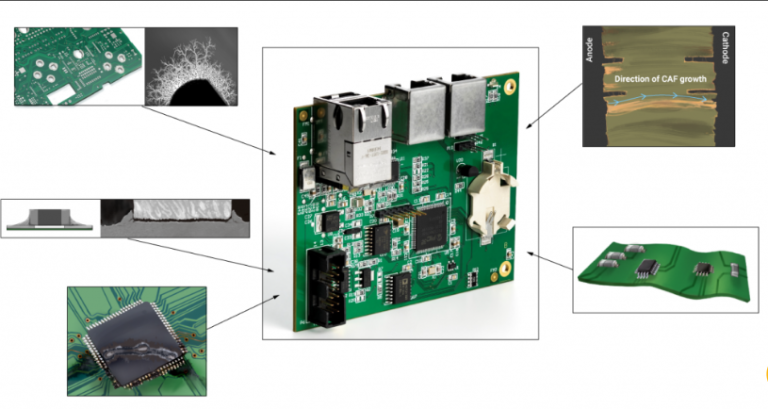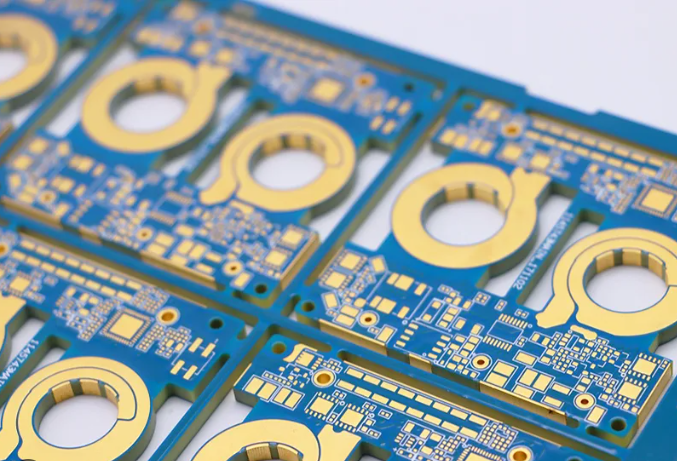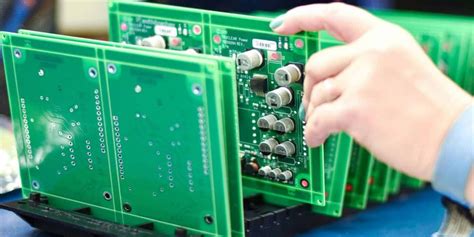Precision PCB Assembly Strategies for Next-Gen Electronics

Key Takeaways
Modern PCB assembly processes demand meticulous attention to high-density integration and signal integrity to meet the performance requirements of next-generation electronics. A well-executed PCBA strategy integrates microvia optimization with advanced thermal management, ensuring minimal signal loss and robust circuit reliability.
"The shift toward miniaturized electronics has made precision in HDI PCB design non-negotiable. Even micron-level deviations in microvia placement can degrade high-frequency performance."
Critical considerations include:
| Design Factor | Traditional Approach | Advanced Strategy |
|---|---|---|
| Component Density | 50–100/cm² | 200–500/cm² |
| Via Diameter | 150–200μm | 50–75μm (laser-drilled) |
| Inspection Method | Manual Sampling | Automated Optical Inspection |
| Thermal Management | Passive Heat Sinks | Embedded Cooling Channels |
For PCBA success, prioritize ultra-fine pitch components and automated quality control systems. These systems leverage machine vision to detect sub-10μm defects, reducing failure rates by up to 40% in high-density layouts.
Pro Tip: Pair automated optical inspection (AOI) with X-ray testing for multilayer boards to identify hidden voids or misalignments in microvias.
Material selection also plays a pivotal role—low-loss dielectrics like Rogers 4000 Series minimize impedance fluctuations, while copper-filled vias enhance thermal dissipation. By aligning design, manufacturing, and testing workflows, engineers can achieve sub-5ppm defect rates in mission-critical PCB assembly applications.

Advanced PCB Assembly for Next-Gen Electronics
Modern PCB assembly processes are redefining manufacturing standards for next-generation electronics, driven by the demand for miniaturization and ultra-reliable performance. At the heart of these advancements lies PCBA (Printed Circuit Board Assembly) technology, which integrates high-density components with sub-micron precision. Engineers now prioritize microvia optimization to address signal integrity challenges in multilayer designs, employing laser-drilled interconnects that reduce parasitic capacitance while supporting GHz-frequency operation.
A critical shift in PCB assembly workflows involves the adoption of automated optical inspection (AOI) systems, which scan solder joints and component placements at resolutions exceeding 20μm. These systems complement advanced pick-and-place machines capable of handling 01005-sized passives, ensuring error rates below 0.015% in mass production. For high-density integration, designers leverage embedded component technology—burying capacitors or resistors within substrate layers—to free up surface area for critical ICs.
Thermal management remains a focal point, with PCBA specialists implementing thermally conductive substrates and strategic copper balancing to dissipate heat from compact, power-dense layouts. This approach minimizes thermal stress on ball grid arrays (BGAs) while maintaining signal integrity across temperature fluctuations. By aligning material selection with precision assembly protocols, manufacturers achieve mean time between failures (MTBF) exceeding 100,000 hours for mission-critical applications.

Optimizing Microvia Design in HDI PCBs
Modern PCB assembly processes demand meticulous attention to microvia architecture in high-density interconnect (HDI) designs. As next-gen electronics shrink in size while expanding functionality, microvias—typically defined as vias with diameters below 150μm—play a critical role in enabling high-density integration without compromising signal integrity. Optimizing these structures requires balancing aspect ratios (depth-to-diameter), laser drilling precision, and copper plating uniformity to ensure reliable electrical connections across multilayer boards.
Advanced PCBA workflows now incorporate simulation-driven design tools to model thermal stress and electromagnetic interference (EMI) effects on microvia clusters. For instance, staggered or stacked microvia configurations can mitigate signal attenuation in high-frequency applications, while filled-via-in-pad techniques enhance thermal dissipation in power-dense circuits. Material selection also influences performance: low-loss dielectrics like polyimide or liquid crystal polymer (LCP) reduce parasitic capacitance, preserving signal quality in 5G and IoT devices.
Automated inspection systems, such as 3D X-ray tomography, have become indispensable for verifying microvia integrity during PCB assembly. By detecting voids or misalignments early, manufacturers minimize rework cycles and improve yield rates. As HDI designs push toward sub-6μm line widths, collaborative efforts between design engineers and PCBA providers ensure alignment with IPC-2226 standards, ultimately delivering robust, miniaturized solutions for aerospace, medical, and automotive applications.

Automated Quality Control Systems for PCBs
Modern PCB assembly workflows increasingly rely on AI-driven inspection systems to address the complexities of next-generation electronics. Automated optical inspection (AOI) and 3D X-ray tomography now enable real-time detection of micro-defects—such as solder bridging or misaligned components—critical for high-density integration designs. These systems integrate with PCBA production lines, performing multi-layer scans at speeds exceeding 25,000 components per hour while maintaining sub-10μm precision.
Advanced algorithms analyze thermal profiles and signal integrity metrics during reflow soldering, dynamically adjusting process parameters to prevent latent failures. For microvia-rich boards, machine learning models cross-reference design files with inspection data, flagging potential impedance mismatches or plating voids. This closed-loop feedback not only reduces rework rates by up to 40% but also generates traceable quality reports essential for aerospace and medical-grade certifications. By embedding automated quality control directly into PCB assembly workflows, manufacturers achieve tighter tolerances for next-gen applications while scaling production throughput.

High-Density Integration Techniques Explained
Achieving high-density integration in modern PCB assembly requires balancing component miniaturization with electrical performance. Stacked microvias and laser-drilled interconnects enable multilayer stacking while maintaining signal integrity, a critical factor for PCBA designs in next-gen electronics. By leveraging high-density interconnect (HDI) technology, manufacturers reduce trace widths to below 40µm, allowing ultra-fine pitch components like BGAs and QFNs to coexist in compact layouts.
Advanced PCB assembly workflows now incorporate sequential lamination processes to manage complex layer transitions, minimizing parasitic capacitance in high-speed circuits. Embedded passive components, such as resistors and capacitors within substrate layers, further optimize spatial efficiency. For PCBA reliability, designers use simulation tools to predict thermal stress and electromagnetic interference (EMI) risks early in the design phase.
Transitioning to higher densities demands precision in material selection, with low-loss dielectrics like polyimide or liquid crystal polymer (LCP) becoming standard for high-frequency applications. Automated optical inspection (AOI) systems verify alignment accuracy post-PCB assembly, ensuring micron-level tolerances are met. As component pitches shrink below 0.3mm, these techniques collectively address the growing demand for miniaturized yet robust electronic systems. This progression seamlessly leads to discussions on managing heat dissipation in densely packed designs—a challenge addressed in subsequent thermal management strategies.

Thermal Management Solutions for Advanced PCBs
Effective thermal management is critical in PCB assembly for next-gen electronics, where increased power density and miniaturization amplify heat generation. Advanced thermal interface materials (TIMs), such as graphene-enhanced adhesives or phase-change compounds, are now integral to PCBA designs, ensuring efficient heat transfer from high-power components to heatsinks. Engineers increasingly leverage copper-filled microvias and embedded thermal vias to create low-resistance pathways, effectively dissipating heat in high-density interconnect (HDI) boards.
Automated thermal simulation tools play a pivotal role during design validation, modeling heat distribution under real-world operating conditions to preempt hotspots. For mission-critical applications, active cooling solutions—including microfluidic channels or piezoelectric fans—are being integrated directly into PCB assembly layouts. Material selection also remains paramount: low-CTE substrates and ceramic-filled laminates minimize thermal expansion mismatches, enhancing long-term reliability.
Transitioning from design to production, PCBA manufacturers employ infrared inspection systems to monitor solder joint integrity and component alignment, which directly influence thermal performance. This multi-layered approach ensures that advanced PCBs maintain optimal operating temperatures, safeguarding signal integrity and extending device lifespans in demanding environments.
Ensuring Reliability in Precision PCB Assembly
Achieving consistent reliability in PCB assembly requires a multilayered approach combining material science, process engineering, and rigorous testing protocols. For next-generation electronics, even minor deviations in solder joint integrity or thermal stability can compromise entire systems. Modern PCBA workflows address this by implementing high-Tg laminates to withstand elevated operating temperatures and low-CTE substrates to minimize mechanical stress during thermal cycling.
Automated optical inspection (AOI) systems now leverage machine learning to detect micron-level defects in real time, while X-ray inspection validates microvia fill rates and layer alignment in high-density interconnects. To ensure long-term performance, manufacturers conduct accelerated life testing (ALT) under extreme conditions, simulating years of operational stress within controlled environments.
Critical to reliability is the integration of moisture-resistant coatings and conformal shielding, which protect sensitive components from environmental factors. Additionally, adherence to IPC-A-610 standards for PCB assembly ensures consistent solder fillet profiles and component placement accuracy. For PCBA designs targeting mission-critical applications, redundancy features like daisy-chained vias and parallel circuitry further mitigate single-point failure risks.
By combining these strategies with traceable process documentation, manufacturers can deliver precision assemblies that meet the stringent demands of aerospace, medical devices, and automotive systems—where failure is not an option.
Microvia Optimization and Signal Integrity
Effective PCB assembly processes for next-generation electronics demand meticulous attention to microvia design, particularly in high-density interconnect (HDI) boards. As signal speeds increase and component footprints shrink, optimizing aspect ratios and via placement becomes critical to maintaining signal integrity. Modern PCBA workflows leverage laser-drilled microvias with diameters below 100μm, enabling shorter electrical paths while minimizing parasitic capacitance and inductance. However, improper stacking or inadequate plating thickness can introduce impedance mismatches, leading to signal degradation in high-frequency applications.
To address this, engineers employ advanced simulation tools to model electromagnetic interference (EMI) effects and refine via geometries before fabrication. For instance, staggered or offset microvia configurations reduce crosstalk in multi-layer designs, while filled and capped vias enhance thermal stability during PCB assembly. Automated optical inspection (AOI) systems further validate microvia quality, ensuring consistent plating coverage and alignment across production batches.
Integrating these strategies with high-density integration techniques—such as embedded passives or via-in-pad structures—creates a balanced approach to signal routing. By prioritizing thermal management and material selection (e.g., low-loss dielectrics), PCBA teams can mitigate heat-induced impedance variations, preserving signal clarity in mission-critical applications like 5G modules or AI accelerators. This synergy between microvia optimization and robust manufacturing protocols underscores the precision required for next-gen electronics to meet escalating performance benchmarks.
Next-Gen Electronics Manufacturing Best Practices
Implementing PCB assembly (PCBA) best practices requires a holistic approach that balances design innovation with manufacturing precision. Modern electronics demand sub-10μm trace tolerances and multilayer stacking techniques to achieve high-density integration, necessitating advanced laser drilling for microvia optimization. To maintain signal integrity, designers are adopting asymmetric stacked vias and low-loss dielectric materials, which reduce crosstalk in high-frequency applications.
Automation plays a pivotal role, with automated optical inspection (AOI) systems now integrating machine learning algorithms to detect defects at <0.1% error rates. Pairing this with real-time thermal profiling during reflow soldering ensures consistent joint quality, even in ultra-thin PCB assemblies. Manufacturers are also prioritizing closed-loop feedback systems to align PCBA processes with Industry 4.0 standards, enabling predictive maintenance and reducing downtime.
For thermal management, embedded copper pillars and direct-bonded copper (DBC) substrates are becoming standard in power-dense designs, dissipating heat more efficiently than traditional methods. Collaboration between design and production teams remains critical, particularly when scaling PCB assembly workflows for mixed-technology boards combining rigid-flex and embedded components. By adhering to IPC-A-610 and ISO 9001 protocols, manufacturers can ensure reliability while meeting the evolving demands of 5G, IoT, and AI-driven devices.
Conclusion
The evolution of PCB assembly processes underscores their pivotal role in meeting the demands of next-generation electronics. As devices shrink in size yet expand in functionality, high-density integration and microvia optimization remain non-negotiable for maintaining signal integrity and minimizing electromagnetic interference. Modern PCBA workflows now integrate automated quality control systems that leverage machine vision and AI-driven analytics to detect submicron defects, ensuring compliance with stringent reliability standards.
While advanced techniques like sequential lamination and laser-drilled microvias address thermal management challenges, designers must balance material selection with manufacturing feasibility. The synergy between precision PCB assembly and robust testing protocols creates a foundation for ultra-reliable circuit performance, particularly in mission-critical applications such as aerospace and medical devices.
Looking ahead, the adoption of modular PCBA frameworks will accelerate prototyping cycles without compromising quality. By prioritizing design-for-manufacturability principles and embracing adaptive automation, engineers can navigate the complexities of next-gen electronics while maintaining scalability. Ultimately, the success of advanced PCB assembly hinges on continuous innovation across materials, processes, and validation methodologies to keep pace with rapidly evolving technological landscapes.
FAQs
What distinguishes advanced PCB assembly from standard processes?
Advanced PCBA incorporates high-density interconnect (HDI) designs, laser-drilled microvias, and automated inspection systems to meet the precision demands of next-gen electronics. Unlike conventional methods, these techniques minimize signal loss and enhance thermal stability in compact layouts.
How does microvia optimization impact signal integrity?
Optimized microvias reduce parasitic capacitance and impedance mismatches, critical for maintaining signal integrity in high-density PCBs. By leveraging laser drilling and staggered via structures, engineers achieve smoother current flow and minimize electromagnetic interference (EMI).
Why is automated quality control vital for modern PCB assembly?
Automated systems like automated optical inspection (AOI) and X-ray testing detect microscopic defects (e.g., solder voids, misalignments) that manual checks might miss. This ensures ultra-reliable PCBA outputs, particularly for aerospace or medical devices requiring zero-failure performance.
Can thermal management solutions scale with increasing component density?
Yes. Advanced PCB assembly integrates embedded thermal vias, copper-filled trenches, and thermally conductive substrates to dissipate heat efficiently. Pairing these with active cooling systems ensures stable operation even in power-intensive applications like 5G modules or AI processors.
What certifications validate reliability in precision PCBA?
Compliance with IPC-A-610 (Class 3) and ISO 9001 standards confirms adherence to rigorous quality benchmarks. Additionally, accelerated life testing and thermal cycling simulations verify long-term durability under extreme conditions.
Ready to Elevate Your Electronics Manufacturing?
For tailored PCB assembly solutions that align with next-gen requirements, please click here to explore our advanced PCBA capabilities and technical support.







